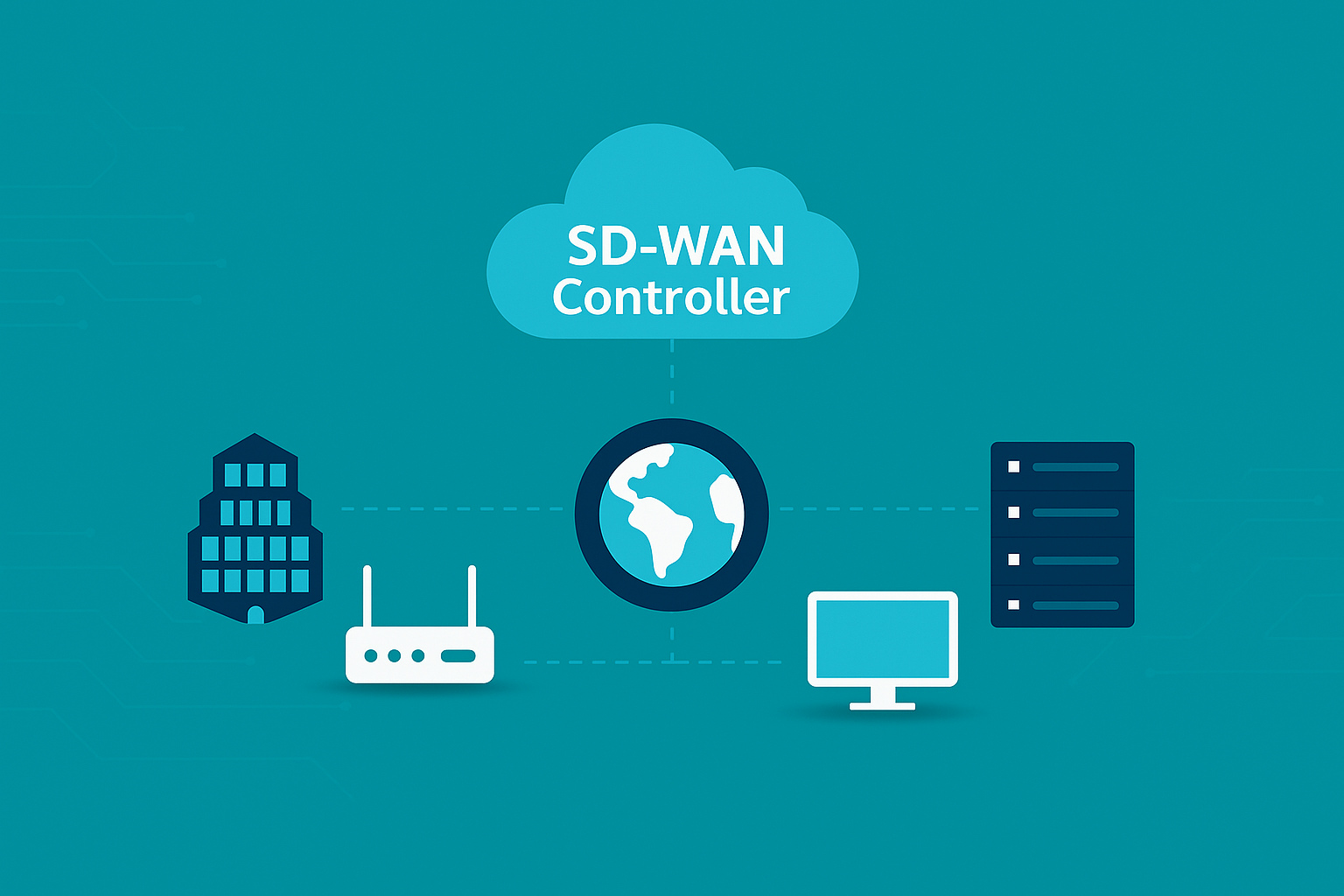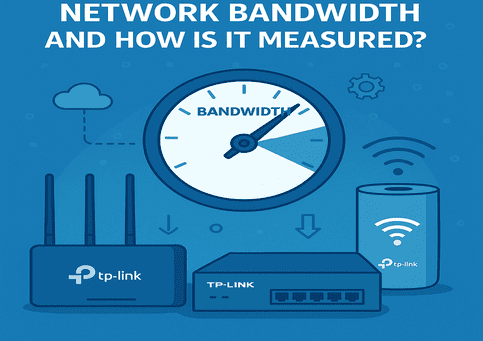Bandwidth Explained: Why It Matters for Streaming, Gaming & Work
Have you ever wondered why your videos buffer, games lag, or video calls suddenly freeze even with a fast internet plan? The answer often lies in your bandwidth. Bandwidth determines how much data your network can send or receive at once—and it directly affects how smoothly you can stream, play, or work online.
Whether you’re gaming, streaming, or working online, understanding bandwidth helps you optimize your internet for faster and more reliable connections.
So, if you want to boost your productivity and entertainment, learning how to manage it can make a big difference.
What Is Bandwidth?
Bandwidth is the maximum suggested data transmission rate over the internet in a given time period. They are measured in bits per second (bps).
Some may mistake it for internet speed causing your computer to lag. The truth is, it's the volume of information that can pass through a network at once.
Think of it as a water pipe. The size of this pipe is the bandwidth that passes data into your network. The wider the pipe, the more data can pass simultaneously.
Bandwidth vs. Speed
Bandwidth is the capacity of how much data your connection can handle. The width of the passage allows data to enter and reach your network. Speed, on the other hand, is how quickly the data moves from one point to another.
You can have a high-speed connection, but if your bandwidth is low and multiple devices are competing for it, you’ll still experience lag, buffering, and slow downloads.
Bandwidth vs. Latency
How long does data travel from one point to another across a network? This is latency or what is commonly known as lag. When you have a lower latency, it means a faster travel time of data to reach the receiver.
The term "bandwidth" simply means the quantity of data that can flow. One could say that a high bandwidth would be required for an uninterrupted flow of data in gaming or video calls. Low latency, meanwhile, is associated with a quick real-time response.
Bandwidth vs. Throughput
Just like bandwidth is the potential capacity wherein data can travel, throughput is the measure of how much data can actually travel over some network.
Because of congestion, interference, or hardware limits, throughput is usually lower than the theoretical bandwidth.
Omada’s cloud-based monitoring tools can help you visualize this difference in real time. With it, diagnosing performance issues has become easier. Having easy cloud-based network management can help you monitor your network. Plus, you can access and manage it via the Omada app or web interface anytime and anywhere.
Why Is Bandwidth Important?
Whatever we do online consumes bandwidth. When we are streaming a video, attending a video call, or backing up files to the cloud.
In today's office culture, almost all tasks hinge on reliable connectivity. From VoIP to cloud storage and video collaboration, productivity is affected when bandwidth runs thin.
Having too many devices and users connected to a network also needs more bandwidth to keep things running smoothly.
If you don’t have enough bandwidth, you’re going to experience many setbacks. Streaming or gaming may lag or buffer. Your calls might drop during an online meeting. Downloading or uploading data slows down.
How Much Bandwidth Do You Need?
Measuring how much bandwidth you’re going to need depends on how you use the internet. You also need to consider how many users are going to share this connection.
Home Office Users
When it’s for remote work, video calls, and document sharing, aim for at least 25–50 Mbps. You can aim higher if there are multiple people who will use it for work or study at home.
Businesses with 10+ Employees
For teams that use cloud apps, VoIP calls, and file transfers, it is recommended to have at least 100–500 Mbps.
Larger businesses benefit from scalable network solutions like Omada SDN. This allows for centralized bandwidth control across multiple locations.
Streamers and Gamers
Any single device at any time can eat up 25 Mbps or more while streaming 4K videos or when it comes to heavy Online gaming. What you need is a plan that is able to support many streams and still maintain its speed while others are using it.
Cloud Users
Businesses relying on cloud storage, online collaboration tools, or large data uploads should consider 1 Gbps or higher for seamless performance.
Factors Affecting Network Performance
Bandwidth alone doesn’t guarantee fast performance. There are other factors that can affect the performance of your connection.
The connection can freeze or cause lag in case multiple users share your total bandwidth (which, in turn, can cause lag). Make sure there is enough bandwidth so that everyone can share and go along with it simultaneously.
If your router is old, it can also affect your connectivity. It may have weaker signal strength and lower speed because of its outdated technology. Also, if it is placed poorly, it also reduces range and signal strength.
There can also be disruptions of wireless signals because of other devices. Maybe there are other nearby wi-fi networks, or other physical materials like metal or concrete, that can interfere with the signal.
Network congestion can also cause slowdowns. This happens when there are too many users on the network at once. And when your firmware is outdated, the performance of your connectivity, and even your security, suffers.
Investing in a system that can help you manage your bandwidth can ultimately improve many aspects of your internet usage. With Omada’s centralized cloud management, you can track these factors easily, set data limits, and optimize usage per department or device.
How to Optimize Your Bandwidth
1. Upgrade Your Network Equipment
With the best router or access point in your hands, you can achieve business-class services and carry out uninterrupted data flow. Wider coverage with channels and more simultaneous connections with less interference are offerings of Omada next-gen Wi-Fi 6 and Wi-Fi 7 devices.
2. Prioritize Important Traffic
Determine which activity should be given higher priority. Once done, it will be assigned additional bandwidth through a QoS procedure. This could be a very high-priority task such as video conferencing or live streaming. With it, you can ensure that these are given priority to run smoothly.
3. Use Omada SDN for Smarter Control
You can integrate your network devices, including access points, switches, and routers, with the Omada Software Defined Networking (SDN) platform. It can help you monitor your bandwidth usage in real time. In addition, you can also set its limit for different devices or users.
Another way to create a new VLAN would be to separate the networked business-critical data that has gone into guest or entertainment networks. Omada SDN will optimize your existing network, and bandwidth scaling will work efficiently.
How to Increase Bandwidth
You can do a few things to boost your bandwidth and get the most out of your internet devices. Here are a few things you can try:
-
Upgrade to a higher Mbps plan: Consider how you work with your bandwidth. In case one streams much content or uses a number of gadgets, one can opt for a greater capacity plan.
-
Use the latest router and Wi-Fi standards: Technology keeps updating. It’s the same with the routers we use. To keep up with the wi-fi standards, using the latest router models like Omada’s Wi-Fi 6 and Wi-Fi 7 routers offers faster speeds, higher frequencies, and better performance across multiple devices.
-
Enable Quality of Service (QoS): Prioritize important activities like video calls or cloud apps. Allocate them more bandwidth during peak hours so that you can ensure they run smoothly.
-
Segment your network: With Omada SDN, you can separate traffic by department or device type. This strategy can help you avoid congestion. You can also isolate important activities into their segments, improving their performance
-
Regularly update firmware: Updates are automatically pushed by Omada cloud for the purpose of fortifying and optimizing client devices.
Why Businesses Choose Omada
Bandwidth management doesn’t have to be complicated. With Omada’s Software Defined Networking (SDN), you get intelligent, unified control over your entire network from branch offices to remote teams.
Monitor bandwidth usage, optimize connections, and allocate resources efficiently. And best of all, you do it all on one dashboard.
Smarter Networks Start with Omada
Whether you are managing a home office, growing a team, or merely fueling a digital business, understanding bandwidth is going to help with the connectivity and getting work done.
With Omada, you don’t just get speed; you also gain control, stability, and scalability designed for the needs of modern businesses.
From secure VPN routers to AI-powered cloud controllers and smart managed switches, Omada delivers enterprise-grade reliability and cybersecurity—keeping your network efficient, safe, and ready to grow.
Explore these excellent devices from Omada that can help increase bandwidth, improve network performance, and support more devices at the same time:
Omada AX6000 Ceiling‑Mount WiFi 6 Access Point: A high-capacity wireless access point with WiFi 6 (AX6000) performance; ideal for supporting multiple simultaneous clients, offering high throughput and reducing wireless bottlenecks.
Omada ER605W AC1350 Gigabit Wi‑Fi Gateway: A gateway router with Gigabit ports and built-in wireless capability; helps ensure the wired backbone isn’t the limiting factor and enables stronger wireless coverage.
Omada ER605 Omada Gigabit VPN Router: The Omada ER605 Gigabit VPN Router helps increase bandwidth by supporting multiple WAN connections, Gigabit ports, and load balancing, allowing you to combine or distribute internet traffic efficiently.
FAQs About Bandwidth
1. What is bandwidth?
Bandwidth is the utmost limit of data an internet connection can transfer in a second, usually measured in megabits per second. It means how much information can flow through your network at a time.
2. What affects my bandwidth speed?
Several factors can limit bandwidth, such as outdated routers, too many connected devices, Wi-Fi interference, or a slow internet plan from your provider.
3. How can I improve my bandwidth performance?
Use a quality router, limit background downloads, upgrade your plan if needed, and consider using Omada’s network solutions for better traffic control, coverage, and stability.

_20250820063952w.jpg)

